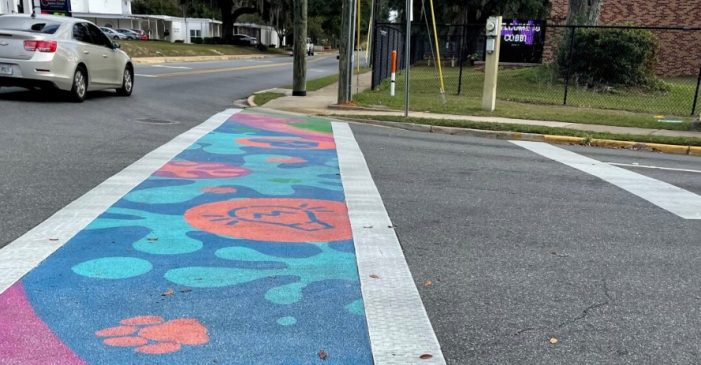By Jim Turner, The News Service of Florida
TALLAHASSEE — The city of Miami Beach has challenged a controversial directive by the Florida Department of Transportation to remove art and markings on streets — including LGBTQ-themed rainbow crosswalks.
The city filed a challenge Thursday at the state Division of Administrative Hearings, arguing that the Department of Transportation issued the directive in a June 30 memorandum without going through a legally required rule-making process.
The challenge seeks to have an administrative law judge block enforcement of the memo unless the state properly adopts it as a rule — a process that, for example, likely would include steps such as opening the issue for public comment.
“Memorandum 25-01 (the memo) does not merely provide guidance,” the city’s attorneys wrote. “It declares certain design features non-compliant, directs that they be removed, and mandates (Department of Transportation) district enforcement. It further authorizes FDOT itself to withhold state funds or directly remove installations if local governments do not comply. In this way, Memorandum 25-01 creates binding obligations and penalties not otherwise found in statute or rule, and alters the legal rights of local governments by categorically prohibiting features that remain permissible under existing standards.”
The Department of Transportation’s directive has affected numerous local governments across the state and particularly has drawn controversy because it led to the removal of rainbow street art — including outside the Pulse gay nightclub in Orlando, where 49 people were killed in 2016
The Miami Beach petition at the Division of Administrative Hearings said the state targeted what are described as “terrazzo pavers” at Ocean Drive and 12th Street in the city. The crosswalk was designed with rainbow colors.
The Department of Transportation memo said removal of markings and street art is needed for safety reasons.
“Non-standard surface markings, signage and signals that do not directly contribute to traffic safety or control can lead to distractions or misunderstandings, jeopardizing both driver and pedestrian safety,” the memo said “Furthermore, uniform and consistent application of pavement surface markings is critical for the overall effectiveness of automated vehicle operation, as automated vehicle technologies rely heavily on consistent traffic control devices.”
The memo cited legal authority under state manuals that include minimum standards for such things as design and maintenance of roads.
But the Miami Beach petition said the manuals and a state law do not include a “categorical prohibition of the type announced in Memorandum 25-01.”
“Each of these sources either permits limited use of decorative or colored pavement treatments under defined conditions or establishes a process for adopting enforceable standards by rule,” the city’s attorneys wrote. “Memorandum 25-01 goes further by vitiating those flexible standards and imposing a binding, statewide ban.”
The city said it also has filed a separate petition at the Department of Transportation seeking a hearing.


It’s really simple. Any traffic control needs to be standardized so everyone knows what it is and what it means.
And the very instant a pedestrian is struck by a motor vehicle, Dewey, Cheatum and Howell will sue the city/county.